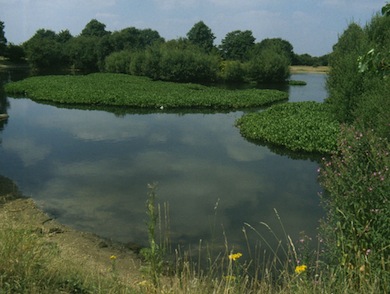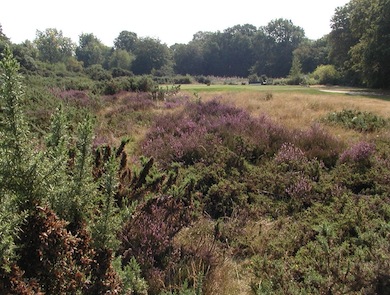Straddling the boundaries of three London boroughs, Mitcham Common is one of the most varied and interesting areas of open space in south London. This large site consists mainly of acid and neutral grassland, wetlands (including ponds and ditches) and several small but important areas of heathland. It also features areas of former grassland now returned to woodland.Merton Healthy Walks and Morden Start the Week with a Walk use this site both Walking the Way to Health (WHI) schemes; see links for details.
Local Wildlife Site
Accessible Sites of Importance for Nature Conservation
Mitcham Common
Borough: Merton, Sutton
Grade: Metropolitan
Access: Free public access (all/most of site)
Area: 193.41 ha
Description
Wildlife
The heathlands are notable for the abundance of the London rarity dwarf gorse; other heathland plants include heather and petty whin. The acid grassland is diverse and contains many London rarities, including saw-wort, dyer's greenweed, heath-grass, spiny restharrow, annual knawel and the nationally scarce plants chamomile and yellow vetchling.The wetland areas support further uncommon species such as water-purslane, ivy-leaved crowfoot, marsh pennywort, bogbean and the sole London population of parsley water-dropwort.Breeding birds include linnet, reed bunting and skylark.Insect life is exceptionally diverse, with the collection of species occurring typically in and around the Thames estuary being particularly well-represented. Many locally rare and nationally scarce species are present, including the brown argus and white-letter hairstreak butterflies.Facilities
Information (at the Mill House Ecology Centre, where educational and interpretive facilities are available); car parking; toilet; refreshments. Walks are organised by the Friends of Mitcham Common.
View across Seven Island Pond at Mitcham Common © Ian Yarham

Restored heathland at Mitcham Common © Paul Moorhouse
Feedback
Have a question or a comment for this site, or notice anything missing or out of date? Please contact us.
